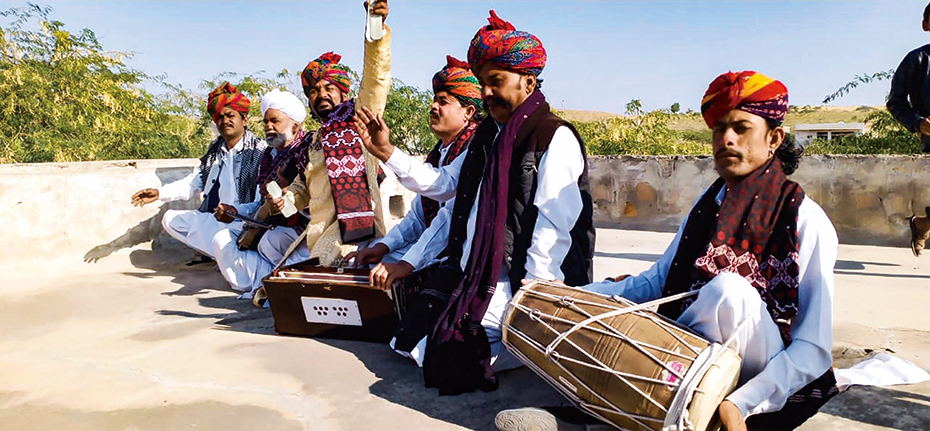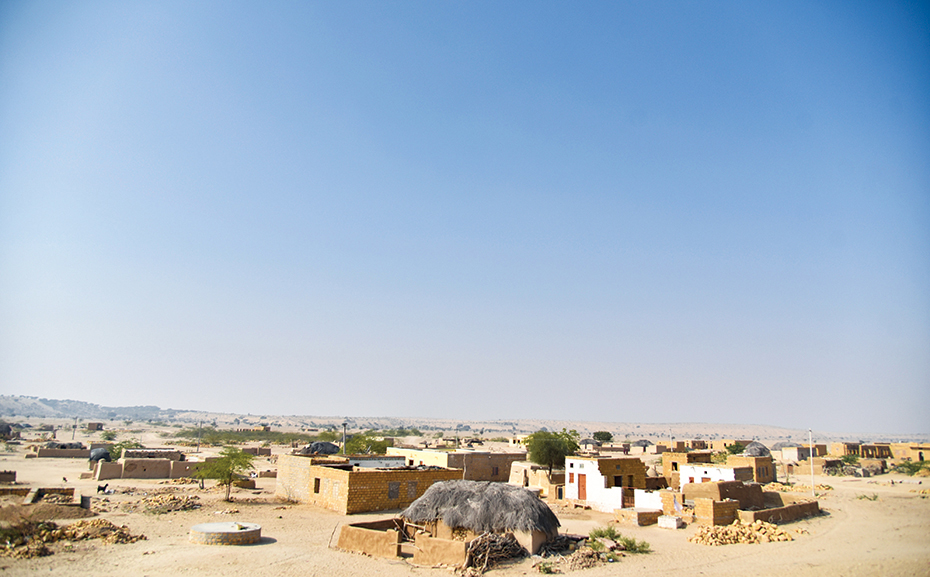Madhura Dutta
banglanatak dot com
The unforeseen global pandemic of Covid-19 is having a long-term, hard-hitting impact on life and living, and lockdowns, fear, and uncertainty have been evoking different types of survival responses from different sections of people. Discussions abound on proper physical and emotional well-being, good governance, positivity, and humane support towards each other, from the family to global communities. At the same time, this pervasive crippling of humankind has also raised wide-spread consciousness and efforts towards responsible living, sustainability, resilience, happiness, creativity, and local action.
In my work, connecting with rural artisans and artists from across India has always been important because we work with them to develop, sustain, and professionalize their traditional cultural skills. So, an ongoing dialogue with artists became important not only to sustain our relationships but also to learn more about how they are coping and what it is that they are holding on to.
My interactions with folk musicians and singers of western Rajasthan are worth sharing. Among these artists are manganiyar and langa singers who sing about nature, human lifecycles, epics, ballads, folklore, daily life, etc. Their iconic musical instruments include khamaicha, sindhi sarangi, shahnai, algoza, khartal, and morchang. Some of these singers are renowned, rich, and famous and have travelled the world. However, many are not, and their villages mostly remain in oblivion. We work with these communities to promote and create sustainable village-based livelihoods through cultural tourism.

Bachu Khan & team (Barnawa Jageer, Barmer) © banglanatak dot com
When our work with them got stalled at the end of March, we decided to use social media platforms to keep them connected. Through the MusiCal Facebook page @bncmusical, an initiative of banglanatak dot com, these rural artists are being brought in to perform live from their villages. In a coordinated and professional manner they perform at designated daily program slots, which are pre-advertised on the page and for which they are also paid. From April to May, 40 performances by 155 artists had an outreach of 159,700 viewers. The performers appear online at designated hours, all decked up, with mindfully chosen beautiful desert settings as their backdrops to perform. This platform has become popular, being shared and reshared not only by urban audiences but also within their community across various parts of Rajasthan. All the artists perform in groups of musicians and singers, with their traditional instruments, some of which are entirely new experiences for many audiences. Colleagues, friends, and friends of friends have started connecting, commenting, liking, and building a network of hundreds across the world.
Just as I enjoyed listening to their music and songs, I also enjoyed talking to the performers. Most of them felt that they were in a relatively better condition in their villages, with community support and access to essential food items that they grow. However, they were also apprehensive about the coming tough times, as the season changes to an adverse dry summer when cultivation becomes increasingly more difficult. They shared that although their livelihood has been severely affected because traveling is integral to their work, so has the entire world with which they empathize and share in their pain.

Village in Jaisalmer © banglanatak dot com
When asked how they felt about their live online programs, each had something interesting to say. Some of the younger artists were excited to be able to perform online and reach out to hundreds of listeners even during the lockdown. For some, this was a first-of-a-kind experience, doing a choreographed online event from their village homes, and they appreciated the efforts of my colleagues who painstakingly explained to them every detail of recording such live programs. For some of the elderly performers—fathers and grandfathers of the more technology-savvy young singers—the virtual world and its nuances did not seem to have sunk in much; they were just happy that they were invited to perform, even if there was no real audience in front of them. They sang about birth and life, about goodness and blessings, about loved ones who are waiting to return to each other, and about calling the almighty who exists everywhere and is the world’s savior. There were a few who emphasized a feeling of being connected to other artists, singers, musicians, and friends, both old and new, who have heard their program and have called or written to applaud them. They said that even when they are physically miles apart, they feel closer to each other through interactions and musical exchange, which is giving them some positive energy to cope with the present uncertainty and secluded life. In their words, “humein lag raha hai hamare sath koi hai,” “sannata nehi hai, sab nazdeek aa gaye,” and “jhum gaye sab.” They harped on the confluence of music and singers of different languages and cultures, from different parts of Rajasthan and Bengal (also a part of this initiative), and how each is inspiring the other by reaching out with their own melodies and songs. According to them, music is giving them the strength and encouragement to not lose hope. Some of the lesser-known and newer artists felt a sense of achievement as they sang on the same digital platform where renowned, senior, and even Padmashree awardee artists also performed. When they found some of the gurus of these musical forms, who otherwise remain extremely busy with their travels and programs, listening to them, and dropping appreciative comments, they felt happy, encouraged, and fulfilled. They kept telling me, “Dil khush ho gaya.” The masters expressed their joy watching artists from the interior of Rajasthan, performing together with their family members, sons, and even grandsons.
On a more spiritual note, which is integral to their music, they talked about one God, brotherhood, humanity, and friendship. They worship their music, which gives them collective power, strength, and faith to fight adversity on the one hand and derive immense joy from living on the other. The richness of their cultural capital is known to the world, but how it builds their emotional capital in dire straits was something worth learning about.







